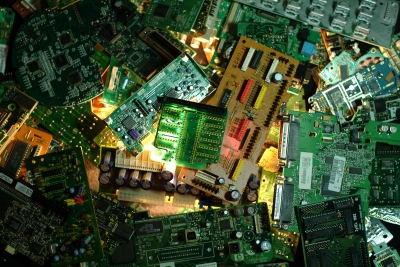And the fastest growth is likely to be seen in the Asia-Pacific region where generation of e-scrap is expected to surge from 3.6 kg per inhabitant in 2016 to 5 kg nine years later.
These are among the findings of a new report commissioned by the BIR’s E-Scrap Committee and published at the world recycling organisation’s latest Convention, held in Barcelona on May 27-30 2018.
The study, entitled “Statistics on the national arisings of e-scrap and the movement of e-scrap between countries”, was conducted by a team of experts at the Harokopio University of Athens, led by Professor Katia Lasaridi. Their evaluation of real data and extrapolation of figures from around 180 countries indicate that global e-scrap generation is set for “a more than 30% increase in less than a decade”.
Over the nine years from 2016 to 2025, and when taking into account rising population, per-capita generation of e-scrap is forecast to climb around 20% worldwide from 5.6 kg per year to 6.7 kg. In addition to the Asia-Pacific region, generation growth is predicted over the 2016-2025 period for all other regions of the world: from 1.5 kg to 1.8 kg in Africa; from 9.7 kg to 11.9 kg in Eastern Europe; from 6 kg to 6.8 kg in Latin America & the Caribbean; from 21.9 kg to 24.1 kg in the USA & Canada; and from 20.2 kg to 22.6 kg in Western Europe & others.
In pure volume terms, the Asia-Pacific region is already the world’s largest generator of e-scrap with a total of 15.9 million tonnes in 2016; this figure is expected to soar to 23.7 million tonnes by 2025. This is more than double the estimate for the second-largest generating region, namely Western Europe & others, whose total is forecast to climb from a fraction under 9 million tonnes in 2016 to more than 10.2 million tonnes nine years later.
“The total quantities of e-scrap arisings are on an upward trend across the globe with a very strong indication that this trend will continue unabated for some time due to the emergence of innovative technologies and more affordable electronics,” say the report’s authors. “Taking into account the population size and current low generation per inhabitant in the Asia-Pacific countries, one can conclude that the future increase of e-scrap would mainly be derived from these nations and to a lesser extent from Africa.”
The study highlights the challenges and opportunities relating to e-scrap and provides a baseline for the recycling industry and policy-makers “to plan effective actions to capture the e-scrap potential for contributing to Circular Economy goals”, they add. They also call for standardised methods and techniques to facilitate realistic measurement of the amounts of e-waste generated in different countries.










